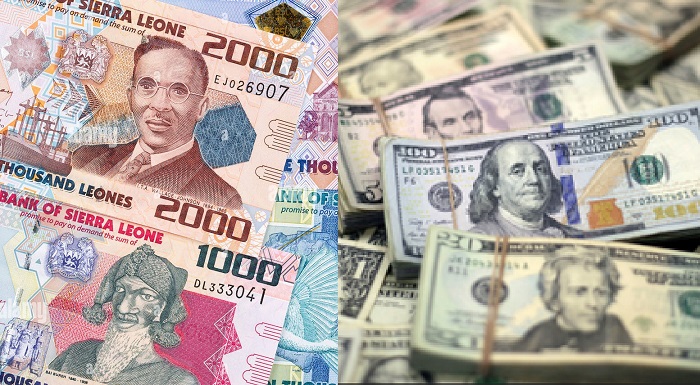Sierra Leone was among the West African nations reliant on commodity exports which faced extended exchange rate depreciations during the international commodity price surge of 2022.
The West African Development Outlook, published annually by the African Development Bank, highlights exchange rate depreciation as a significant cause of inflation in the region in recent times.
The region’s exchange rate landscape was intricate. A vast majority of West African currencies depreciated relative to the US dollar due to several reasons: the US Federal Reserve’s substantial interest rate increases in 2022, global uncertainty prompting investments in US treasuries, depleting international reserves, widening trade deficits, inflation due to increased energy and food prices following Russia’s actions in Ukraine, and constrained foreign currency inflows, especially for commodity-exporters.
Ghana’s cedi was notably affected, plummeting by an alarming 33.6% against the US dollar in 2021-2022, a significant leap from the previous year’s 3.6%. Key reasons included waning investor trust regarding the country’s mounting debt and increased demand for foreign exchange impacting its reserves.
In Sierra Leone, the currency depreciated by 24.3% in 2021-2022, a rise from 8. (Alprazolam) 7% the previous year, affected by growing trade deficits and dwindling reserves.
Conversely, Nigeria’s parallel market exchange rate depreciated nearly by one-third, in sharp contrast to the previous year, widening the disparity between the official and parallel rates by about 70%.
In places with currency depreciations or devaluations, the already elevated costs of imported food and fuel intensified.
Liberia’s currency remained steady in 2021-2022, a result of the central bank’s proactive measures, increased private remittances, and government fiscal operations.
Regarding non-resource-intensive countries, the Gambian dalasi depreciated 6.7% in 2021-2022 due to a growing need for foreign currency for imports. The Cabo Verdean escudo, linked to the euro, depreciated 11.8% in 2021-2022 because of a growing current account deficit.
Interestingly, the Guinean franc outperformed other West African currencies, appreciating 3.7% against the US dollar in 2021-2022. Factors like foreign exchange inflows and central bank strategies in the exchange market supported this appreciation. The ongoing strength of the Guinean franc was linked to the return of export profits and foreign exchange market reforms geared towards bolstering the currency.


 Post a comment
Post a comment









Comment(s)
Disclaimer: Comments expressed here do not reflect the opinions of Sierraloaded or any employee thereof.
Be the first to comment